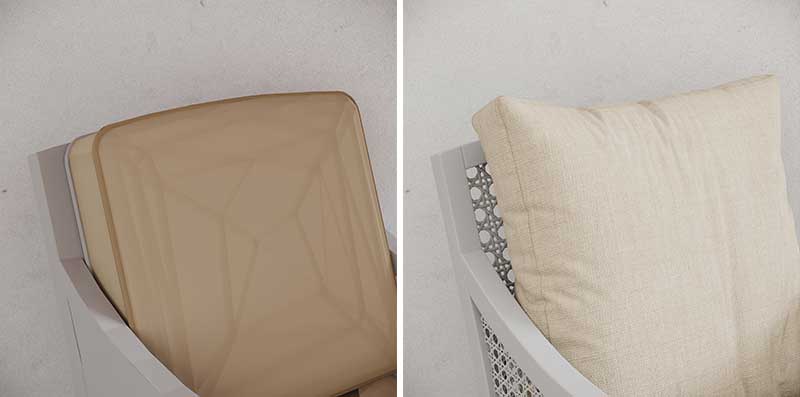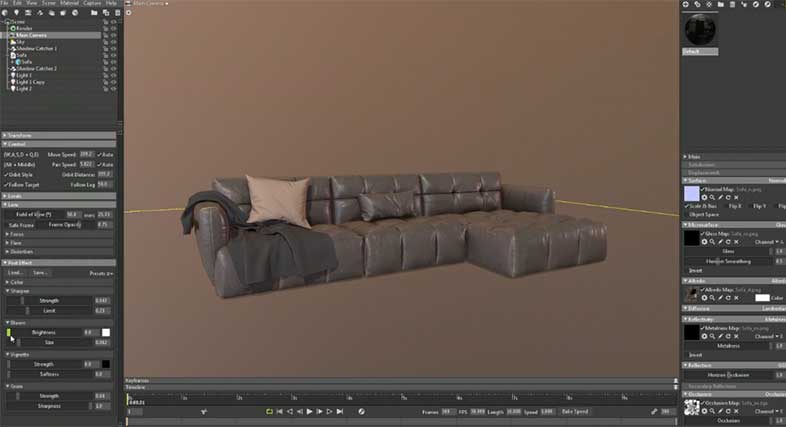3D Model Retopology
How It Influences The Quality of a 3D Object
3D modeling is not a new thing for product imagery — many advanced manufacturers and marketers have already switched from traditional photography to 3D. Now, when a brand needs photorealistic 3D models for promo and catalogs, marketers go straight to a 3D modeling studio to get a top-notch 3D model in just a day or two.
But 3D objects can be different depending on purposes. For example, 3D artists always make high-polygonal 3D models for static 3D renderings. Such objects may consist of thousands of polygons – the straight-sided shapes, usually triangles, that creates a smooth surface when combined.
However, high-poly modeling doesn’t work for motion solutions like a 360 view, VR, AR, animation and 3D configurators. Due to the huge number of polygons, it’s too difficult and long for apps to render them. In such cases, 3D artists use 3D model retopology and make low-polygonal models for fast-processing apps and tools.
The retopology method is based on reducing the polygon count but keeping the quality of 3D models. To achieve that, 3D modelers can use different tactics, for example, creating a low-poly mesh on top of complex high-polygon objects. This way, they stick to the original geometry and curves but transform the complex 3D model into a “lighter” object with the same visual parameters. As a result, 3D retopology makes quality low-poly 3D items that look as realistic as high-poly ones but can be rendered much faster.
So how does retopology influence the quality of 3D models? Keep scrolling to learn 5 bombastic features of 3D model retopology.
#1. 3D Model Retopology Prevents Polygon Distortions

Usually, high-poly surfaces consist of thousands of triangular polygons. Therefore, when CG artists try sculpting and animating these objects, they have to pull polygons in and out. As a result, the edges of particles they move cause distortions such as holes, jags, and so on. Naturally, these distortions lead to twisted geometry and visual artifacts that mess up the CG imagery.
By doing 3D model retopology, 3D artists can turn a chaotic surface made of triangular polygons into the structured mesh of smaller particles called quads. Because of their size and position, quads make much more flexible mesh that is easy to modify, sculpt or move – the adaptable elastic mesh stays solid without holes, notches and other distortions.
#2. Retopology Provides Better Shaping of the Object

Standard triangular polygons may not always fit the shape of an object, especially if it’s curvy or intricate. Naturally, it takes a lot of n-gons or polygons with n-sides, to create a curvy smooth surface. As a result, such complex geometry makes a 3D model “heavier” and completely unfit for applications and animation.
Despite the different methods of 3D model retopology, all of them help to superimpose the polygonal mesh to perfectly fit the shape of a 3D object. Thus, after the 3D model creation, 3D artists can retopologize the mesh so that all its components would smoothly follow every curve of the product. Because of the new structure, 3D experts can easily reduce the number of polygons without compromising on quality. Therefore, 3D retopology is simply vital for 3D modeling of soft furniture with pleat and tufted upholstery, wooden pieces with curved carvings, and so on.
#3. 3D Model Retopology Smooths the 3D Surface

Obviously, since 3D model retopology reduces the number of polygons, it also minimizes the number of seams and jointing edges. Therefore, a curved high-poly surface that consists of a gazillion of polygons must be converted into a lightweight model with an absolutely smooth surface.
This is the most important aspect of low-poly modeling for textured complex objects. After all, if the surface is uneven, then it will be impossible to apply textures in the most natural way. Thus, the photorealism of the material directly depends on whether the 3D modeler has done topology/retopology or not.
#4. 3D Model Retopology Makes Texture Mapping Easier

With 3D model retopology, you can still use even the most high-maintenance textures and they will look superb. To do so, 3D artists first prepare the surface as mentioned above. Then, they can transform the texture map using the texture baking method. Using it, 3D modelers are able to preserve, that is, bake, many of the 3D properties of the material, including its texture relief and even lighting. This way, a 2D texture map can retain the 3D properties of the object without taking too many resources to render.
Because of 3D model retopology, the surface is ready for any texture map and it fits perfectly in the shape without any creases, twists and distortions. After 3D modelers made retopology and baked the texture map, the application’s engine and graphic card are able to render the photoreal 3D model with top-notch textures in no time.
#5. Retopology Makes Objects More Light-Weight Without Losing Quality

When it comes to a shopping app, game or animation, there are so many underlying processes that all happen simultaneously. Firstly, there could be other moving objects in the scene apart from the product. Or if it’s a 3D configurator, it could be opening some additional menus and modifying the item at the same time.
That’s why the high-resolution 3D model runs the risk of lagging at the most inopportune moment. For example, in the case of a 3D configurator, the picture may freeze while a person was customizing the product. And now imagine this person is you! Of course, you will simply get angry and close the app or leave the website at once without buying anything.
Since 3D model retopology makes low-poly models, the game or application engine can render them much faster and require fewer processor resources. Therefore, the object moves faster, smoother and in a more natural way.
3D model retopology is a necessary process for using 3D models in animation, shopping apps and 3D configurators. With retopo, 3D experts can transform high-polygonal objects into low-poly ones of the same high quality and photorealism. However, low-polygonal 3D models are “lightweight” and can be rendered by any graphic card and engine literally in a flash. On top of that, professional retopology allows manipulating the object without distortion of surface geometry and textures.
Need to modify your high-poly 3D models for apps and animation? With our 3D modeling services, you can get photorealistic retopology of the highest quality even for the most complex objects!



Leave a Reply
Want to join the discussion?Feel free to contribute!